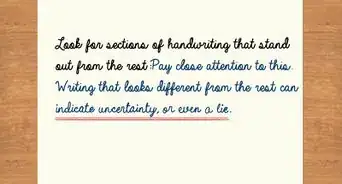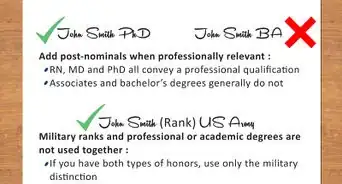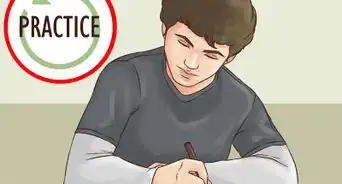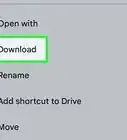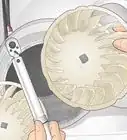This article was co-authored by wikiHow Staff. Our trained team of editors and researchers validate articles for accuracy and comprehensiveness. wikiHow's Content Management Team carefully monitors the work from our editorial staff to ensure that each article is backed by trusted research and meets our high quality standards.
wikiHow marks an article as reader-approved once it receives enough positive feedback. In this case, 82% of readers who voted found the article helpful, earning it our reader-approved status.
This article has been viewed 695,560 times.
Learn more...
If you want to learn how to write shorthand to increase the speed of your writing, you'll first have to choose a method of shorthand that works best for you. There are three major methods for writing shorthand: the Teeline method, which is used commonly by journalists, the Pitman method, and the Gregg method, which is used widely by stenographers. Each method has its own strengths and weaknesses, but choosing any technique will increase the speed at which you can write, making taking notes, jotting down thoughts during class or a meeting, or simply writing a document much faster and easier!
Things You Should Know
- To use Teeline shorthand, keep vowels at the beginning and end of words. Leave out all other vowels, silent consonants, and double consonants.
- To use Pitman shorthand, use dots or dashes to represent vowels. Use abbreviations for common words and conjunctions.
- To use Gregg shorthand, use shapes to represent consonants and circles to represent vowels.
Steps
Writing Teeline Shorthand
-
1Study the Teeline alphabet. The alphabet uses curves and strokes to represent letters in the English alphabet. It does not use phonics like other shorthand methods. Instead, it uses different symbols to represent certain letters. Most of the letters are represented by a curve or stroke that is in the English letter, such as a pointed upside down “v” shape for “A.”
- You can find the Teeline shorthand alphabet here: http://www.alysion.org/handy/althandwriting.htm.
-
2Keep only the essential vowels and consonants in words. In Teeline shorthand, you leave out silent consonants, double consonants, and vowels that are unnecessary. You keep only vowels at the beginning of a word and at the very end of a word.[1]
- For example, the word “LAMB” will be written as “LM.” “COMMA” will be written as “CMA,” “ABOUT” is written as “ABT,” and “LIGHT” is written as “LT.”
- If you were writing a sentence in Teeline like, “You should always remember to take notes in class,” it would be written as, “U shld alwys rmbr t tk nts in cls.”
Advertisement -
3Write vowels smaller than consonants. In Teeline shorthand, the vowels appear a bit smaller than the consonants on the page. This makes it easier for you to distinguish the vowels from the consonants.[2]
- For example, if you were writing the word “COMMA” in Teeline shorthand, you would write the “C” and the “M” in a regular size and the “A” in a smaller size.
-
4Join consonants together. Try to write consonants in one to two strokes without lifting your pen. Keep the first letter clear and then add on the next letter so they form one symbol. This will make your shorthand much faster.[3]
- For example, you may join “b” with “d” by starting with the symbol for “b” and adding a horizontal line on the “b” to note the “d.”
Using Pitman Shorthand
-
1Study the Pitman shorthand alphabet. The Pitman method uses the sound of speech, rather than the spelling of words, to create its alphabet. It has a separate set of symbols for consonants and vowels. It uses thick lines, slashes, and dots to notate words.
- You can find the Pitman shorthand alphabet here: http://www.omniglot.com/writing/shorthand.htm.
- Because this method uses phonetics, the sound of a letter in a word will be written the same way in each word. For example, the sound “f” in “form,” “elephant,” and “rough” are all written in the same way using Pitman shorthand.
-
2Apply the right thickness to the consonant symbols. The consonants in Pitman shorthand have different levels of thickness for different consonants. Make sure you use the right thickness for each consonant.[4]
- For example, the vertical line for the consonant “t” is slightly less thick than the vertical line for the consonant “d.”
- The left slanted line for the consonant “p” is less thick than the left slanted line for the consonant “b.”
-
3Use dots or dashes to represent vowels. In the Pitman shorthand system, vowels are represented with dots or dashes that are applied to the symbols for consonants. This allows you to represent words in shorthand using the sound of the word, rather than how it is spelled.[5]
- For example, to form the word “bat,” you would write the shorthand symbols for “b” and then place the symbol for “t” under the “b” symbol. To note the “a,” you would place a dot at the top of the left hand slant of the “b.”
-
4Include abbreviations for common words like “a,” “the,” “of,” and “to.” The abbreviation for “a” and “an” is one dot above the bottom line of the paper. The abbreviation for “the” is one dot on the bottom line of the paper. “Of” is represented by a small slash starting on the lefthand side that sits above the bottom line. “To” is represented by a small slash starting on the lefthand side that touches the bottom line.[6]
- A complete list of abbreviations in Pitman shorthand can be found here: http://www.omniglot.com/writing/shorthand.htm.
Writing Gregg Shorthand
-
1Look at the Gregg shorthand alphabet. The Gregg shorthand method is phonetic, so it follows the sound of words, rather than the spelling of words. It uses hooks and circles as symbols for words. Like the Pitman method, it has a separate set of symbols for consonants and vowels.
- You can find the Gregg shorthand alphabet here: http://www.omniglot.com/writing/shorthand.htm.
-
2Use the correct shape and length for the consonant symbols. Each consonant is represented by a hook that is a different shape and length. Some consonants, like “n” or “m,” are straight horizontal lines. Other consonants, like “f” or “v,” are more vertical and curved. Study each consonant to ensure you are writing it correctly.[7]
- In some cases, multiple consonants are represented with one symbol based on the sound of the word, such as the sound “n-d” in “and” or “m-n” in “men.”
-
3Represent vowels with circles. The Gregg method uses circles of different sizes to notate the vowel sounds in words. Common vowels like “a” are represented by a large circle, while vowels like “e” are represented by a smaller circle.[8]
- Make sure you notate vowel sounds correctly with circles, rather than just how the vowel appears written in the word. For example, the vowel sound “oo” is represented by an open circle at the bottom. The vowel sound “ea” is represented by a circle with a dot in the center.
-
4Use the proper punctuation marks in Gregg shorthand. Punctuation marks like a period, a question mark, and a hyphen are represented by different symbols in Gregg shorthand. The symbol for the punctuation mark should appear above the bottom line of the page.[9]
- For example, a period is represented by a small dash and a question mark is represented by a small “x.”
- A complete list of shorthand for punctuation marks can be found here: http://www.omniglot.com/writing/shorthand.htm.
Improving Your Shorthand
-
1
-
2Take a course in shorthand writing. Improve your shorthand by taking a class taught by a veteran shorthand writer. Look for a shorthand writing class at your local community college, writing center, or online. The course can teach you how to speed up your shorthand and make it more legible on the page.
- If you do better with one on one instruction, look for a shorthand tutor at your local writing center or online. Schedule regular tutoring sessions so your shorthand can improve.
-
3Practice your shorthand regularly. Try practicing shorthand at least once a day. Get in the habit of using shorthand in class or during an interview so you can get better at it.[11]
- Write each letter of the shorthand on flashcards and use the cards to help you practice.
- Have a copy of the shorthand alphabet handy so you can refer to it as needed.
Community Q&A
-
QuestionHow long does it take for one to master shorthand?
 Community AnswerIt took me one semester to learn Gregg shorthand. Of course, the amount of time will vary according to the amount of time you practice and how quickly you pick things up.
Community AnswerIt took me one semester to learn Gregg shorthand. Of course, the amount of time will vary according to the amount of time you practice and how quickly you pick things up. -
QuestionWhich shorthand technique is the best to learn?
 Community AnswerIt depends on who you are. Mine was Gregg shorthand, but my friend's was Pittman shorthand. It differs between people.
Community AnswerIt depends on who you are. Mine was Gregg shorthand, but my friend's was Pittman shorthand. It differs between people. -
QuestionIn Pitman and Gregg shorthand, which one is better for competitive exams?
 Community AnswerThere was a competition to determine this, and it's been shown Gregg has a slight advantage.
Community AnswerThere was a competition to determine this, and it's been shown Gregg has a slight advantage.
References
- ↑ http://www.teelineshorthand.org/freeteelineshorthandlesson.html
- ↑ http://www.teelineshorthand.org/freeteelineshorthandlesson.html
- ↑ http://www.teelineshorthand.org/freeteelineshorthandlesson.html
- ↑ http://www.omniglot.com/writing/shorthand.htm
- ↑ http://www.omniglot.com/writing/shorthand.htm
- ↑ http://www.alysion.org/handy/althandwriting.htm
- ↑ http://www.omniglot.com/writing/shorthand.htm.
- ↑ http://www.omniglot.com/writing/shorthand.htm.
- ↑ http://www.alysion.org/handy/althandwriting.htm
About This Article
To write shorthand, start by choosing a method of shorthand that you want to learn, like the Teeline method, the Pitman method, or the Gregg method. Whichever method you choose, try to practice writing with it at least once a day since regular practice will help you pick up on it quickly. You can make some flashcards to help you practice, and you can find a copy of the shorthand alphabet on hand so you have something to reference. If you're serious about learning shorthand, consider taking an online shorthand class or hiring a tutor. To learn how to write using the Teeline, Pitman, and Gregg methods, keep reading!

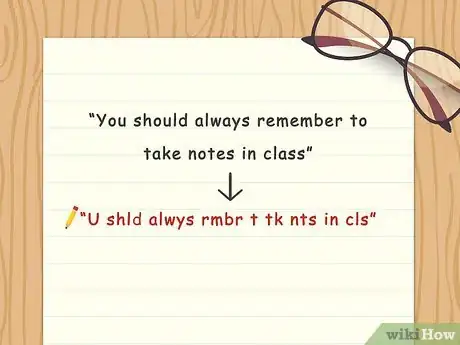

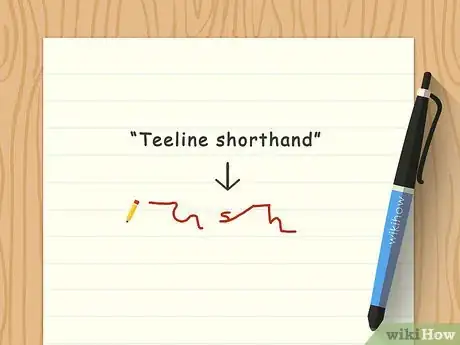

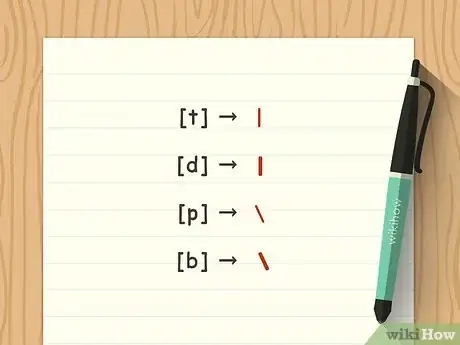
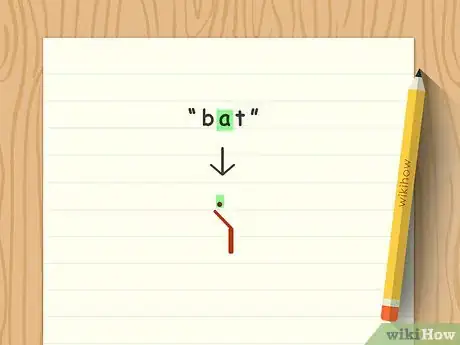
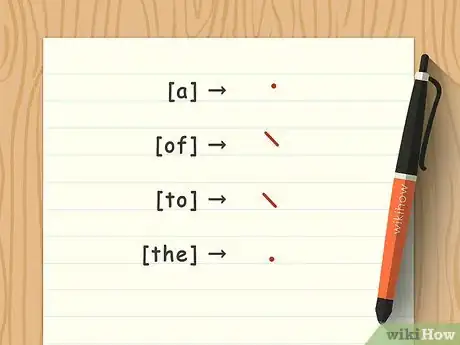

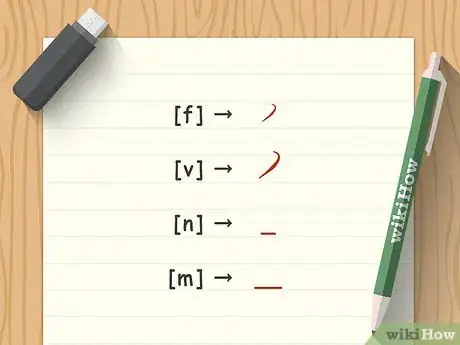

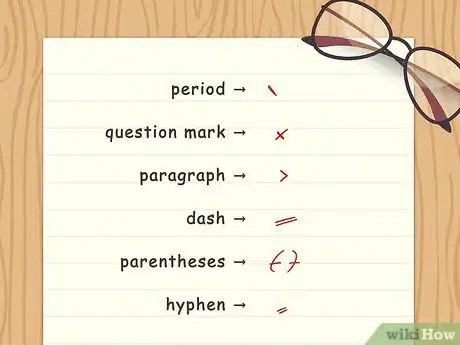





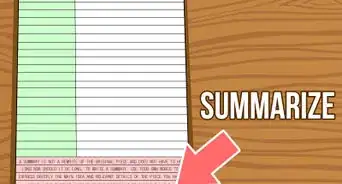
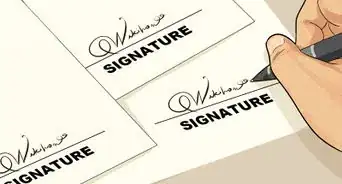

-Step-11-Version-3.webp)
